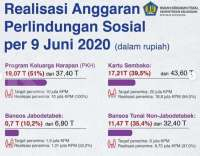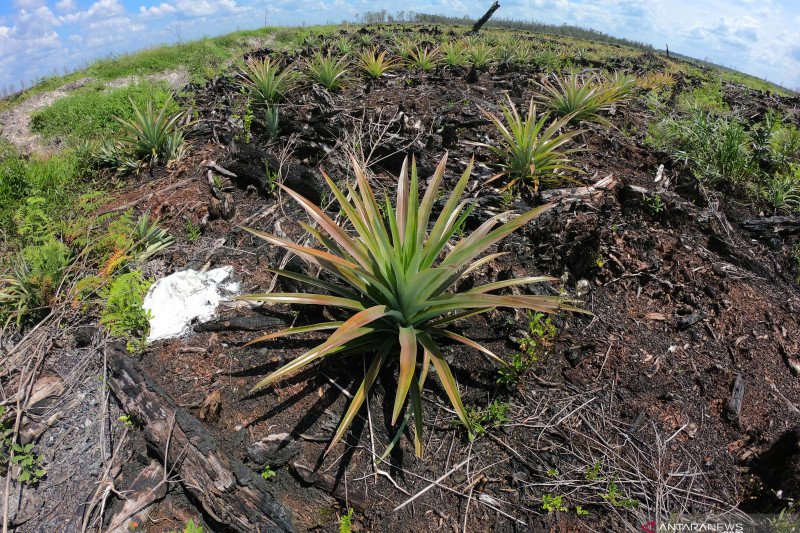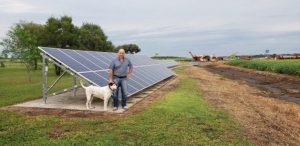
Strengthening Economic Institutions for a Resilient Recovery
12 Juni 2020 Asupan Warta / Newsfeed 0 Comment(photo: metamorworks/iStock by Getty Images) By Antoinette SayehWashington DC, Jun 11 2020 (IPS) Exceptional times call for exceptional action. In response to COVID-19, the IMF has moved with unprecedented speed and magnitude of financial assistance to help countries protect lives and livelihoods. Economic stabilization and a sustainable recovery, however, will […]
Read More
Realisasi anggaran perlindungan dan bantuan sosial mencapai Rp 56,66 triliun
Asupan Warta / Newsfeed 0 CommentPemerintah merealisasikan anggaran program perlindungan dan bantuan sosial Rp 56,66 triliun dari total Rp 178,9 triliun.
Read More
Jerman hibahkan 3 juta euro untuk perlindungan gambut Kaltara
Asupan Warta / Newsfeed 0 CommentJerman melalui The Deutsche Gesellschaft für Internationale Zusammenarbeit (GIZ) GmbH mengalokasikan 3 juta euro sebagai hibah untuk perlindungan dan pengelolaan gambut di Kaltara yang dilakukan bersama Kementerian …
Read More
World: OCHA Annual Report: In 2019, a record US$18 billion in contributions provided life-saving aid
11 Juni 2020 Asupan Warta / Newsfeed 0 CommentCountry: World Source: UN Office for the Coordination of Humanitarian Affairs As the year went on, intensifying conflicts, climatic shocks and the spread of infectious diseases drove needs to unprecedented levels.
Read MoreStudy suggests that climate smart agriculture can boost yields, reduce hunger and emissions globally
Asupan Warta / Newsfeed 0 CommentResearch Post June 11, 2020 Study suggests that climate smart agriculture can boost yields, reduce hunger and emissions globally Alex De Pinto Nicola Cenacchi A new paper is the first to quantify the potential global impact of using CSA in food-crop production.
Read MoreK&L Gates Acts for Dicker Data on AU$65 Million Institutional Placement and SPP
Asupan Warta / Newsfeed 0 CommentEmerging data suggest COVID-19 is driving up hunger in vulnerable countries
Asupan Warta / Newsfeed 0 CommentInitial and ongoing assessments by the UN’s Food and Agriculture Organization (FAO) provide strong indications that the COVID-19 pandemic and its impacts are driving up hunger in countries that were already experiencing high levels of food insecurity prior to the disease’s outbreak. “The COVID-19 pandemic poses a clear […]
Read MorePost-COVID-19 pandemic: What’s it mean for agriculture? (The Westerner)
Asupan Warta / Newsfeed 0 CommentJun 3, 2020 In the News United States of America Post-COVID-19 pandemic: What’s it mean for agriculture? (The Westerner) Trade Food Systems The Westerner published an article on the possibility of a COVID-19 virus and epidemic happening to crops. Senior Research Fellow Joseph Glauber states that we wouldn’t be thinking about a crop plague but for COVID-19. The impact on the […]
Read MoreCOVID-19: President Trump’s Invocation of Emergency Authority to Streamline Environmental Review for Infrastructure Projects
Asupan Warta / Newsfeed 0 Comment
Solar Power Fills Gaps in Underserviced Rural Argentina
Asupan Warta / Newsfeed 0 CommentTeddy Cotella stands in front of the solar panels he installed in 2018 on his farm in an area of scarce infrastructure and far from the power grid, in the Argentine province of Santiago del Estero. To get electricity, he used to use generators that consumed about 20,000 litres of […]
Read More